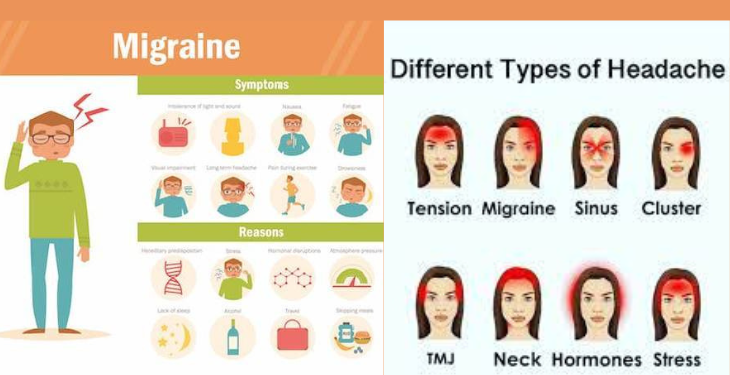Understanding Migraine: Causes and Symptoms

A migraine is a type of headache that is often severe and throbbing. Other symptoms, including nausea, vomiting, and sensitivity to light and sound, may also be present. Migraine is a common disorder, affecting about 1 in 10 people worldwide.
What are the causes of migraines?
Although the precise etiology of migraines is uncertain, a mix of hereditary and environmental factors is assumed to be the primary culprit. Some possible triggers for migraines include:
- Stress
- Lack of sleep
- Certain foods and drinks, such as alcohol, caffeine, and chocolate
- Hormonal changes, such as those that occur during menstruation or pregnancy
- Bright lights
- Loud noises
- Strong smells
- Weather changes
What are the symptoms of a migraine?
Migraine attacks can last for hours or even days. The pain is usually on one side of the head and is often described as throbbing or pulsing. Other symptoms may include:
- Nausea and vomiting
- Sensitivity to light and sound
- Fatigue
- Dizziness
- Blurred vision
- Numbness or tingling in the face, hands, or arms
- Aura, which is a visual disturbance that occurs before the headache, such as flashing lights or blind spots
How is migraine diagnosed?
There is no single test that can diagnose migraines. Your doctor will likely ask you about your medical history and symptoms. They may also perform a physical exam and order some tests, such as a blood test or imaging test, to rule out other possible causes of headache pain.
How is migraine treated?
There is no cure for migraine, but there are treatments that can help prevent or relieve the symptoms.
- Prevention: If you know your triggers, you can try to avoid them. You can also try to get regular exercise, eat regular meals, get enough sleep, and manage stress. Your doctor may also prescribe medications to help prevent migraines.
- Treatment: If you do experience a migraine, there are things you can do to relieve the pain and other symptoms. These include:
- Rest in a dark, quiet room.
- Apply a cold compress to your head.
- Drink plenty of fluids.
- Take over-the-counter or prescription medications as directed by your doctor.
If your migraines are severe or interfere with your daily life, talk to your doctor about other treatment options. There are a number of medications that can be used to prevent or treat migraines, and your doctor can help you find the best treatment plan for you.
What are the complications of migraine?
Migraine can sometimes lead to complications, such as:
- Status migraineurs: This is a migraine attack that lasts for more than 72 hours.
- Migraine with aura: This is a type of migraine that is preceded by a visual disturbance, such as flashing lights or blind spots.
- Migraine-related disability: This is a condition that is characterized by significant impairment in daily activities due to migraine.
What is the outlook for people with migraines?
The outlook for people with migraines is generally good. Most people with migraines can find ways to manage their symptoms and live a normal life. However, some people with migraines may experience severe or disabling symptoms. If you are struggling with migraines, it is important to talk to your doctor about treatment options.







